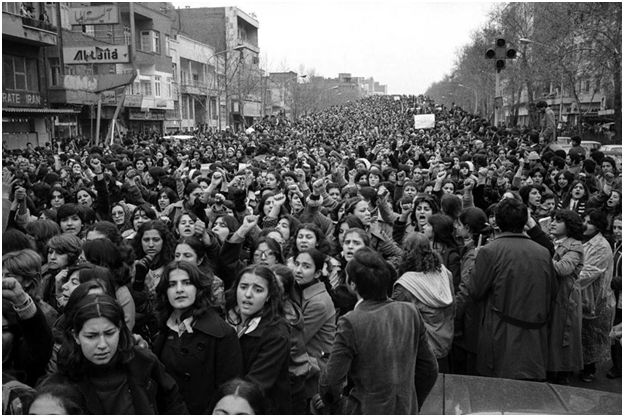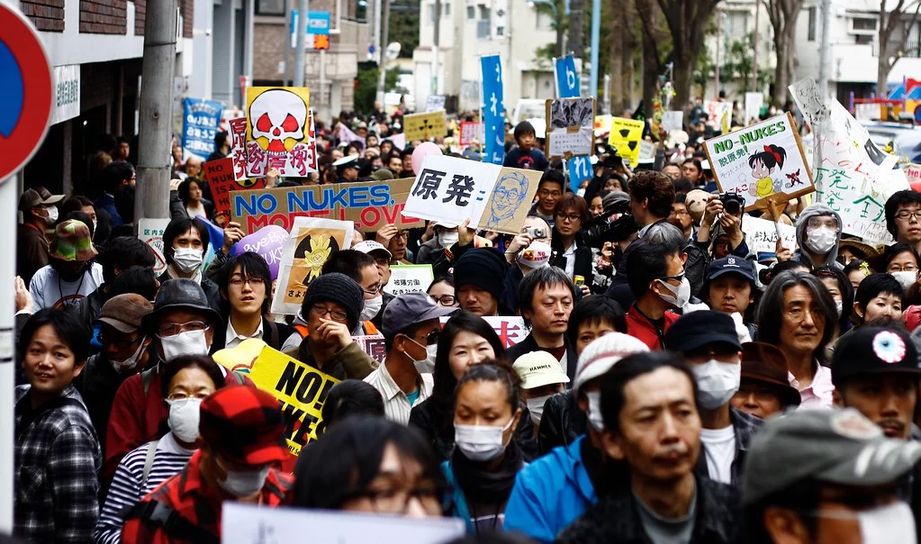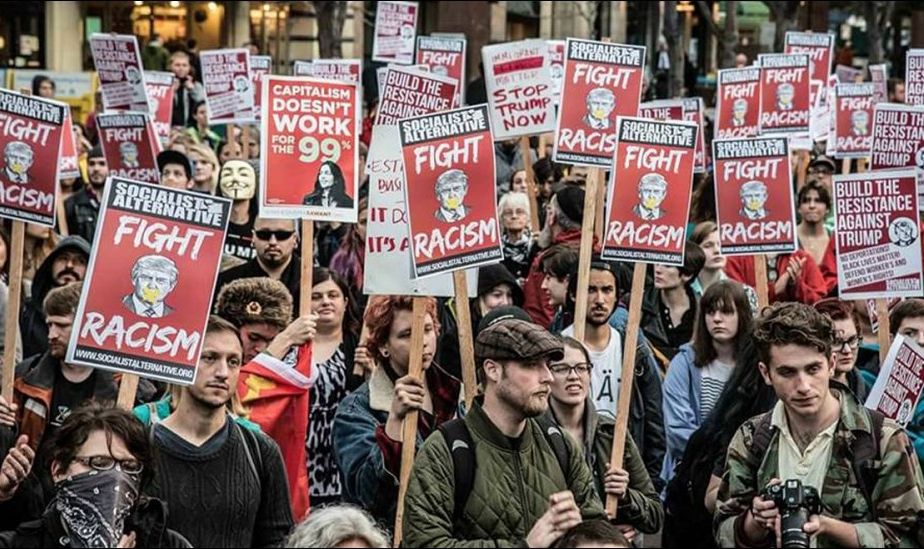Seamus Whelan is a member of Socialist Alternative in the US.

The 1979 revolution didn’t have to end in a religious state
Forty years ago, in January 1979 the hated Shah of Iran, Mohammed Reza Pahlavi, fled the country to the U.S. The Shah was driven out by a mass movement led by workers and youth allied with other forces in the countryside. The question of how this initially progressive revolution degenerated into the current Islamic state controlled by reactionary clerics is one not usually discussed by the corporate-owned media or in academia. But it remains highly relevant as Iranian society remains wracked by contradictions as a new wave of revolutionary movements has emerged this year in North Africa, particularly in Sudan and Algeria.
The Aljazeera-made documentary, “Iran- Legacy of a Revolution” argues that the Ayatollah was the inevitable new leader, as the opposition had little to unite it and there was no post-revolutionary blueprint for them to follow. But nothing is inevitable. The mass uprisings of 1978-1979 had the potential to not only replace the Shah, but throw off the yoke of US imperialism and remove the entire capitalist system in Iran. The leadership required to navigate this situation was not present.
Workers lead the struggle
Maintaining control over the oil and gas reserves in the Middle East has always been a focus of US foreign policy. In the post-WWII period, US imperialism installed and defended client puppet regimes in the region which enriched these leaders’ as they brutally repressed their own peoples. The Shah was installed in power by a US/UK backed military coup in 1953. The coup overthrew a democratically elected government which threatened to nationalize Iran’s oil and petrochemical industry, at the time controlled by British corporations.
Iran under the Shah was an “island of stability” for these interests. For 26 years, the US government trained his vicious SAVAK secret police and sold $19 billion worth of weapons to his regime. While the country’s oil wealth flowed into the pockets of the foreign oil companies and the into the pockets of Shah’s family and friends, most Iranians were struggling to survive.
Over 10 million Iranians, a third of the population, took to the streets and demanded an end to the Shah’s tyrannical regime during 1978 and 1979. The crucial factor that led to his ouster was the oil workers’ strikes involving tens of thousands of workers which paralyzed the key national industry.
Iran has a long history of workers’ struggles. In the aftermath of the Russian revolution, workers in the Gilan region revolted in 1920 and in Kurdistan in 1945. By the time of the coup in 1953 the Tudeh Party, which emerged from the Moscow-influenced Communist party, had a membership of 100,000, and exerted significant influence particularly among oil workers.
A strike wave which began in 1978, grew in strength with 65 new strikes reported on one day alone. Workers began to organize their own councils or shorahs as has happened in every working-class revolutionary movement since 1917. On International Women’s Day 1979, 100,000 protested in Tehran against a new hijab law which required all Iranian women to wear headscarves outside their homes. These mobilizations showed that the consolidation of power by Ayatollah Khomeini was in no way immediate or automatic. Many struggles broke out throughout 1979 and 1980 against the attempts at counter revolution led by Khomeini.
However, the left in Iran failed to meet the challenge presented by these events and failed to seize the opportunity to win power and develop the workers councils as the basis of a workers republic. This failure of leadership created a vacuum that enabled the Ayatollah to come to power.
The outcome could have been different
The argument that revolutions are always violent and lead inevitably to repressive undemocratic regimes is frequently used against the Iranian revolution and every other attempt to bring about a fundamental reorganization of society away from capitalism. The mistakes of the Iranian left unfortunately were a crucial factor which paved the way for the theocracy to successfully consolidate power.
The Tudeh Party adopted the standard Stalinist “two-stage” doctrine that the first stage of the revolution in neo-colonial countries had to be led by the “progressive” capitalists to end imperialist domination and lay the basis for a “normal” capitalist society. This meant that the working class had to subordinate its own struggle for socialism until a later stage. In country after country, the Stalinists betrayed the struggles of workers and peasants by reining them in to this schema. This was the opposite of the approach of the Bolsheviks in 1917 who urged workers not to put their faith in the capitalists and their “socialist” allies in the struggle against Tsarism but to continue the revolution until the working class took power backed by the mass of the peasantry.
Tudeh’s support for the Ayatollah and the new Islamic republic continued right up until the Tudeh Party, the trade unions, and the rest of the left were wiped out in the 1982-83 period by the new regime. Imprisonment and the mass execution of thousands of non-Islamic and Islamic opponents of the regime were carried out.
Missing in this situation was a revolutionary organization armed with a socialist program who could give voice to the desire for transformative change of Iranian working people and youth. Such an organization would have challenged Tudeh leadership on one side and taken an independent class approach to expose and cut across the reactionary and anti-democratic agenda of the Islamic clerics.
1979 Holds important lessons for today
Iranian workers and youth have not submitted meekly to the rule of Islamic state. Iran has been transformed into a a predominantly urban-based educated society. The overwhelming majority are under 30. For Iranian youth, neither Western capitalism nor the local Islamic variation offer a way forward or prospects for a future without poverty, exploitation, and repression – not to mention a future with freedom to live their lives and express their culture. Iranians have moved to protest despite vicious state repression not just against the rule of the Islamic clerics but also of late they have opposed the so called “reformers” who have been tried, tested, and found wanting.
The economic embargo and the nuclear standoff initiated by the Trump administration has further exacerbated the living conditions of the Iranian masses. The maintenance of regional dominance and control over the vast oil and gas resources in the area is behind the West’s intervention. As the second-largest country in the Middle East, Iran is very important to the world economy. It has the world’s largest natural gas supply and the fourth-largest proven oil reserves. The welfare and interests of the peoples of the area has never been a concern for Western or Eastern imperialist powers.
Austerity measures imposed on the poor and working people of Iran by their government has created huge anger. The increasing percentage of the budget going to the families and business interests of the ruling clerics and the ruling-class allies has not gone unnoticed and has led to an increase in strikes and protests.
The contradictions that led to the Iranian revolution have not disappeared but have intensified as the worldwide crisis of capitalism deepens. The rebuilding of the organizations of the left, the trade unions, and the establishment of a genuine party of Iranian workers and youth is needed. A socialist program and leadership is a key task for organizations and movements that will reemerge. With this, a new healthy Iranian revolution could help transform the whole region and the world away from the dead end of capitalist exploitation and Islamic reaction.



